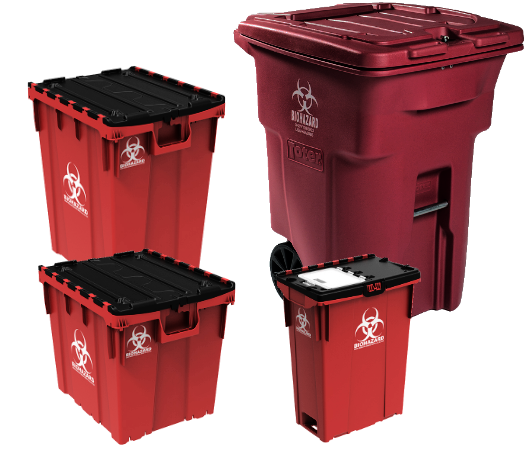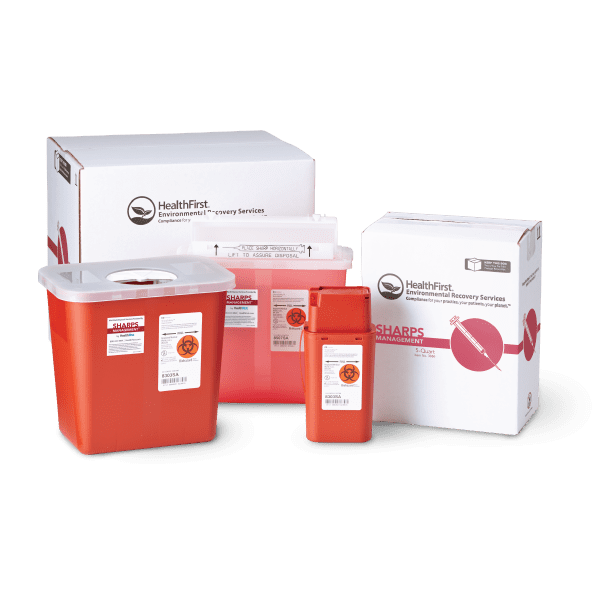Environmental Obligation: The Eco-Friendly Technique to Medical Waste Disposal
Wiki Article
Exploring Different Garbage Disposal Options for a Cleanser Environment
In the quest of a cleaner setting, the management of garbage disposal has actually emerged as an essential centerpiece for lasting development. With a multitude of waste disposal options readily available, varying from traditional landfill techniques to innovative waste-to-energy technologies, the selection of how we handle our waste has far-reaching implications for our planet's health. By taking a look at the various techniques and strategies employed in recycling, composting, incineration, land fill administration, and waste-to-energy processes, a deeper understanding of their influences and performance can be gotten. The mission for ideal garbage disposal techniques that prioritize ecological preservation while fulfilling the requirements of an expanding populace remains a pushing issue in today's world.Recycling Methods
Implementing efficient reusing techniques is vital in reducing waste and promoting sustainability in our environment. Recycling involves the process of transforming waste products into recyclable items to avoid unnecessary disposal.One more vital recycling technique is composting, which includes breaking down organic waste like food scraps and yard trimmings into nutrient-rich soil. By integrating these different reusing approaches right into our waste monitoring practices, we can significantly lower our ecological footprint and move in the direction of an extra lasting future.

Composting Methods
Efficient waste monitoring practices, such as recycling methods, lead the way for a cleaner setting, and now, shifting the emphasis to 'Composting Techniques', we check out lasting means to decay natural waste for environmental advantage. medical waste disposal.Composting is a natural process that changes organic waste, like food scraps and yard trimmings, into a nutrient-rich dirt modification. The key to successful composting exists in creating the best equilibrium of green products, such as fruit and vegetable scraps, and brown products, like dried branches and fallen leaves. These materials decompose with the aid of bacteria, damaging down the waste into beneficial garden compost.
Typical yard composting includes layering natural materials in a bin or heap and on a regular basis turning the combination to freshen it. By utilizing composting methods, we can minimize the amount of waste sent to land fills while creating a useful item for enriching dirt and sustaining plant development.
Incineration Cons and pros
Incineration, as a waste disposal method, presents both advantages and negative aspects that warrant mindful factor to consider in the world of sustainable waste administration practices. On the silver lining, incineration can considerably reduce the volume of waste, lessening the need for landfill area and potentially lowering greenhouse gas exhausts. Incineration likewise enables the healing of energy with the generation of electrical energy or warmth, adding to resource healing. The procedure can be utilized to damage dangerous compounds, using a risk-free technique for dealing with particular types of waste that may present dangers to public wellness and the setting if left unattended.Additionally, the high first investment and operational costs of incineration centers posture economic obstacles, making it a less economical alternative compared to various other waste management approaches. Careful surveillance and regulation are vital to minimize these unfavorable effects and maximize the advantages of incineration as component of a detailed waste administration approach.
Land Fill Administration Techniques
Land fills play a critical function in waste administration and environmental preservation by giving a control system for the disposal of solid waste products. Efficient landfill administration techniques are necessary to minimize environmental influences and guarantee the long-term sustainability of these waste disposal sites. One essential strategy is appropriate waste compaction to maximize the usage of offered space within the landfill (click here). By condensing the waste, the volume is reduced, allowing for even more waste to be suited with time.Moreover, the implementation of everyday cover methods is crucial in reducing odors, protecting against clutter, and decreasing the attraction of pests. Treatment the disposed waste at the end of every day assists to consist of odors and avoid potential environmental contamination. Furthermore, the monitoring of garbage dump gas exhausts and leachate degrees is vital in ensuring that environmental criteria are satisfied which any type of prospective dangers to bordering ecosystems are reduced.

Waste-to-Energy Technologies
One of the ingenious methods to lose management includes utilizing Waste-to-Energy technologies to transform solid waste into useful energy sources. Waste-to-Energy (WtE) modern technologies include a series of processes that intend to extract power from waste products through thermal, chemical, or biological means. This conversion process not only reduces the quantity of waste that winds up in land fills but likewise generates useful power resources such as electrical power, warmth, or biofuels.Incineration includes burning waste at high temperature levels to produce warmth and electricity. Gasification converts waste right into a syngas, which can be made use of for power generation or chemical manufacturing.
Implementing Waste-to-Energy modern technologies can assist mitigate ecological concerns linked with traditional waste disposal methods while concurrently providing a renewable resource resource. Cautious factor to consider should be provided to emissions control and making sure the sustainability of feedstock products for these modern technologies to be really valuable for a cleaner atmosphere.

Conclusion
To conclude, discovering various garbage disposal options such as recycling, composting, incineration, land fill management, and waste-to-energy technologies is crucial for advertising a cleaner environment - click here. Each technique has its very own advantages and challenges, but by using a combination of these techniques, we can function in the direction of decreasing the amount of waste that finishes up in land fills and ultimately add to a more sustainable future for generations aheadWith a plethora of waste disposal alternatives readily available, ranging from typical garbage dump approaches to ingenious waste-to-energy innovations, the option of exactly how we manage our waste has far-ranging implications for our world's health. medical waste removal top article near me.Incineration, as a waste disposal approach, provides both benefits and negative aspects that warrant careful consideration in the world of sustainable waste administration methods.Land fills play a critical duty in waste management and ecological preservation by supplying a control system for the disposal of strong waste materials. By condensing the waste, the volume is minimized, enabling for even more waste to be accommodated over time
One of the ingenious approaches to lose monitoring includes harnessing Waste-to-Energy technologies to transform strong waste right into functional energy sources.
Report this wiki page